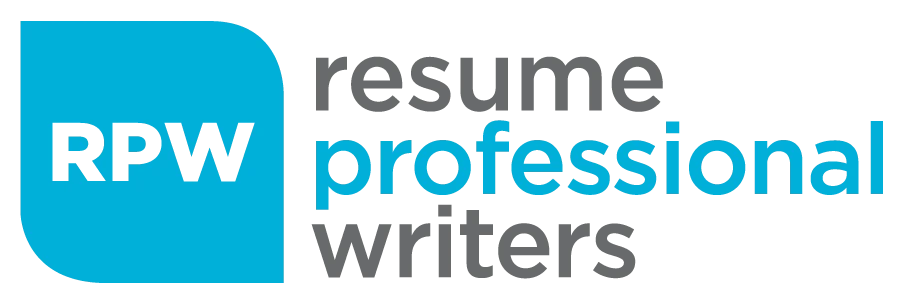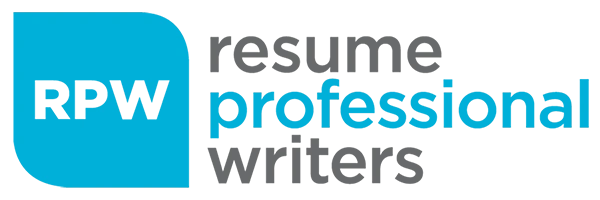Problem-solving interview questions are a big part of the hiring process. Employers ask them to see how you handle challenges, make decisions, and come up with creative solutions. Your answers give them a glimpse into your thinking process and how well you can navigate tough situations at work.
The good news? With the right approach, you can tackle these questions with confidence and stand out from other candidates. In this guide, you’ll learn why interviewers ask problem-solving questions, the different types you might face, and how to craft winning answers that showcase your skills.
Why Do Employers Use Problem-Solving Questions in Interviews?
Employers ask problem-solving questions in interviews to see how you think, make decisions, and handle challenges. They want to know if you can analyze a situation, weigh your options, and come up with a smart solution—even when under pressure. Your answers give them a sense of how well you adapt to obstacles in the workplace and whether you can stay calm and focused when things don’t go as planned.
These questions also help hiring managers understand your approach to teamwork, creativity, and decision-making. They’re looking for candidates who can think outside the box, find solutions with limited resources, and work well with others to solve problems. If you can show that you’re resourceful, adaptable, and able to make well-thought-out choices, you’ll have a better chance of impressing your interviewer.

Key Types of Problem-Solving Interview Questions
Interviewers use different types of problem-solving questions to see how you handle challenges. Here are the four main types you might face and what they reveal about your skills:
1. Behavioral Problem-Solving Questions
These questions focus on real situations you’ve dealt with in the past. Employers want to know how you approached a challenge, what actions you took, and what results you achieved. Your answer helps them understand your problem-solving process based on actual experience.
Example: “Tell me about a time you had to solve a complex problem with limited resources. How did you handle it?”
2. Situational Problem-Solving Questions
Here, you’ll be given questions about hypothetical scenarios and asked how you would handle it. These questions test your ability to think quickly, plan ahead, and find solutions before a problem gets worse.
Example: “If you were leading a project and a key team member suddenly left, how would you manage the situation?”
3. Technical Problem-Solving Questions
These questions check how well you apply your industry knowledge to solve specific issues. They often require you to explain technical processes, troubleshoot problems, or analyze data.
Example: “How would you troubleshoot a system failure affecting the company’s database?”
4. Logical and Analytical Problem-Solving Questions
These questions test your ability to break down a problem, evaluate different options, and come up with the best solution. They show how well you think critically and use logic to make decisions.
Example: “A company wants to cut costs without affecting productivity. What data would you analyze to make an informed recommendation?”

20 Common Problem-Solving Interview Questions (With Sample Answers)
Problem-solving skills are highly valued in the workplace, and interviewers often ask questions to see how you handle challenges. Below are 20 common problem-solving interview questions, along with sample answers to help you prepare.
1. Can you describe a time when you identified a problem before it became serious?
Answer: At my previous job, I noticed that a project deadline was at risk because of slow communication between teams. I suggested using a shared tracker to update progress in real time. This small change helped us stay on schedule and avoid last-minute stress.
2. How do you prioritize tasks when faced with multiple deadlines?
Answer: I start by assessing the urgency and impact of each task. Then, I break them down into smaller steps and focus on high-priority ones first. If needed, I communicate with my team to delegate or adjust timelines to ensure everything gets done efficiently.
3. Tell me about a time when you had to make a tough decision with incomplete information.
Answer: While leading a project, I had to decide whether to move forward with a software update without full test results. I consulted my team, weighed the risks, and decided to proceed with a backup plan in place. The update was successful, and we avoided unnecessary delays.
4. Describe a situation where you had to collaborate with others to solve a problem.
Answer: A client was unhappy with our service, and I worked with my team to find a solution. We listened to the client’s concerns, adjusted our approach, and improved communication. In the end, we turned the situation around and strengthened our relationship with the client.
5. What steps do you take to analyze a problem and determine the best solution?
Answer: First, I gather all available information. Then, I identify the root cause, brainstorm possible solutions, and evaluate their pros and cons. Finally, I choose the best approach and implement it while monitoring the results.
6. Can you share an example of a time you had to solve a problem under pressure?
Answer: During an event, our main supplier canceled at the last minute. I quickly found an alternative vendor, negotiated a fast delivery, and adjusted our schedule to ensure everything ran smoothly. The event went off without a hitch.
7. Have you ever had to solve a problem without direct supervision?
Answer: Yes, in my previous role, a system error disrupted our workflow while my manager was unavailable. I assessed the issue, consulted the IT team, and implemented a temporary fix to keep operations running until a permanent solution was in place.
8. How do you handle unexpected obstacles in a project?
Answer: I stay flexible and look for alternative solutions. I also communicate with my team to brainstorm ideas and adjust plans as needed. The key is to stay focused on the goal and find the best way to move forward.
9. Tell me about a time when you turned a challenge into an opportunity.
Answer: A major client threatened to leave due to delays. Instead of panicking, I worked with my team to improve our processes and offer a customized solution. The client not only stayed but also increased their business with us.
10. Can you give an example of a time when you resolved a conflict at work?
Answer: Two colleagues had a disagreement over project responsibilities. I facilitated a conversation where both shared their concerns, and we restructured the workload to balance tasks. This improved teamwork and project efficiency.
11. How do you approach solving a problem when you’re unfamiliar with the topic?
Answer: I start by researching the issue, asking colleagues for insights, and breaking the problem into smaller parts. If needed, I seek expert advice to ensure I make an informed decision.
12. Describe a time when you had to convince others to accept a solution.
Answer: I proposed switching to a new software to improve efficiency, but my team was hesitant. I demonstrated its benefits, provided training, and addressed their concerns. Eventually, they embraced the change, and productivity improved.
13. Have you ever had to solve a problem with limited resources?
Answer: Yes, I had to plan a marketing campaign on a tight budget. I focused on cost-effective digital strategies like social media and email marketing. The campaign exceeded engagement targets without overspending.
14. Tell me about a time when you improved a process to prevent future problems.
Answer: I noticed that customer complaints were often related to delayed responses. I suggested an automated ticketing system to track inquiries, reducing response times and improving customer satisfaction.
15. How do you balance speed and accuracy when solving a problem?
Answer: I quickly assess the situation to determine the level of urgency. If a fast solution is needed, I rely on past experiences and available data. If accuracy is critical, I take extra time to analyze details before making a decision.
16. What would you do if a team member wasn’t contributing to a group project?
Answer: I would first check in with them to understand if they need support. If necessary, I would clarify expectations, redistribute tasks, and keep communication open to ensure everyone stays on track.
17. Can you describe a time when you had to learn something new to solve a problem?
Answer: In a previous job, I had to analyze data using a tool I wasn’t familiar with. I took an online tutorial, practiced on small datasets, and quickly applied my knowledge to complete the task successfully.
18. Have you ever had to troubleshoot an issue for a customer or client?
Answer: Yes, a customer was frustrated with a product malfunction. I patiently walked them through troubleshooting steps, identified the issue, and provided a quick solution. They appreciated the support and remained a loyal customer.
19. How do you handle criticism when solving a problem?
Answer: I see criticism as a chance to improve. If someone offers feedback, I listen carefully, ask questions if needed, and adjust my approach to make sure the final solution is the best it can be.
20. What would you do if your initial solution to a problem didn’t work?
Answer: I would reassess the issue, look for what went wrong, and explore alternative solutions. If needed, I’d seek input from colleagues or experts to find a better approach.
How to Answer Problem-Solving Interview Questions with Confidence
Here’s how you can answer the questions above with confidence and leave a great impression.
1. Follow the STAR Method
A great way to structure your answer is by using the STAR Method:
- Situation: Describe the problem you faced.
- Task: Explain what needed to be done.
- Action: Share the steps you took to solve it.
- Result: Highlight the positive outcome.
2. Explain Your Thought Process
Don’t just say what you did—explain why you did it. Walk the interviewer through your thinking. Show them how you break down a problem, weigh different options, and choose the best solution.
3. Show That You Can Adapt
Not every problem has a simple solution. Sometimes, you need to adjust your approach or think on your feet. Employers want to see that you can stay calm, make smart decisions, and handle unexpected challenges.
4. Highlight Teamwork
Many problems require teamwork to solve. If you worked with others, mention how you communicated, shared ideas, or helped guide the team. Employers like people who can solve problems while working well with others.
5. Share Real Results
Whenever possible, talk about the results of your actions. Did you save time, improve a process, or help the company in some way? Numbers or specific outcomes make your answer stronger and more convincing.

Boost Your Hiring Chances with a Job-Winning Resume
Acing your interview is important, but a strong resume is what gets you through the door. Employers look for candidates who can solve problems, think critically, and make smart decisions under pressure. Showcasing these skills on your resume—along with clear examples of how you’ve handled challenges—can set you apart from the competition and boost your chances of landing the job.
If you want a resume that truly highlights your problem-solving skills and makes a lasting impression, Resume Professional Writers is here to help. Our expert writers know what hiring managers are looking for and will craft a resume that showcases your strengths in the best possible way. With a polished, job-winning resume, you’ll have the confidence to move forward in your job search and stand out to top employers.








